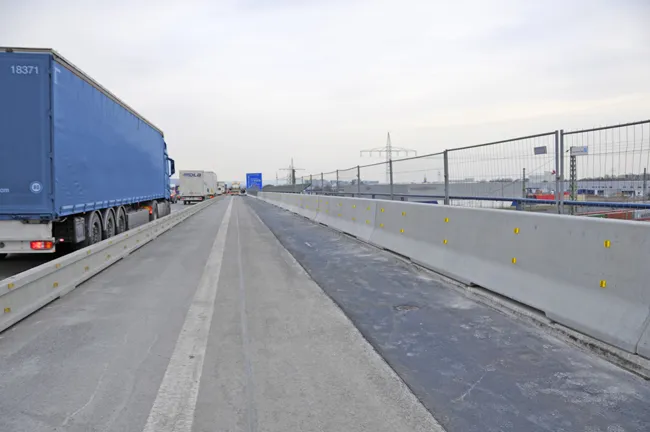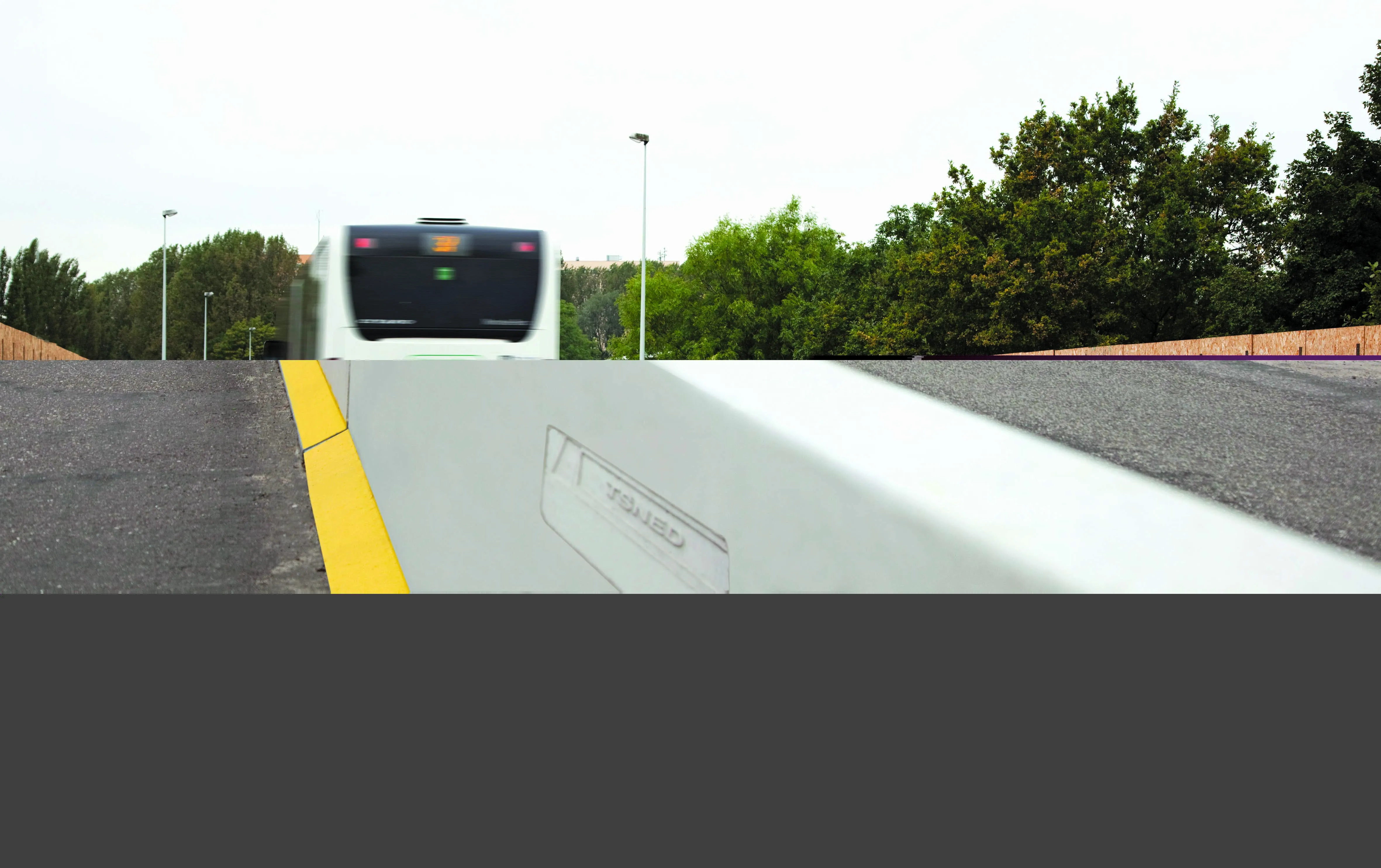
Tested freestanding, the barrier achieves containment levels H2 with working-width W3 and H4b with W5. It is also possible to achieve H4b with W4 by using an additional position securing system.
The safety concrete barrier is part of the REBLOC SWITCH product line which enables the use of the same system as either a temporary or a permanent barrier.
All systems use the integrated REBLOC coupling. This not only enhances traffic safety, according to REBLOC, but speeds up installation, meaning fewer travel disruptions and greater traffic safety.
The REBLOC 100SFP_8_H2/W3 has been installed on a bridge undergoing renovation near Regensburg, Germany where the client required a reliable temporary barrier. The system is used as protection against falls onto a rail-track underneath the bridge. It is also used to secure the construction site – an example of the product’s flexible use.
Additionally, expansion joint elements were installed to allow for normal temperature fluctuations. As safety is REBLOC’s highest priority, these expansion joint elements are part of EN 1317-1/2.









